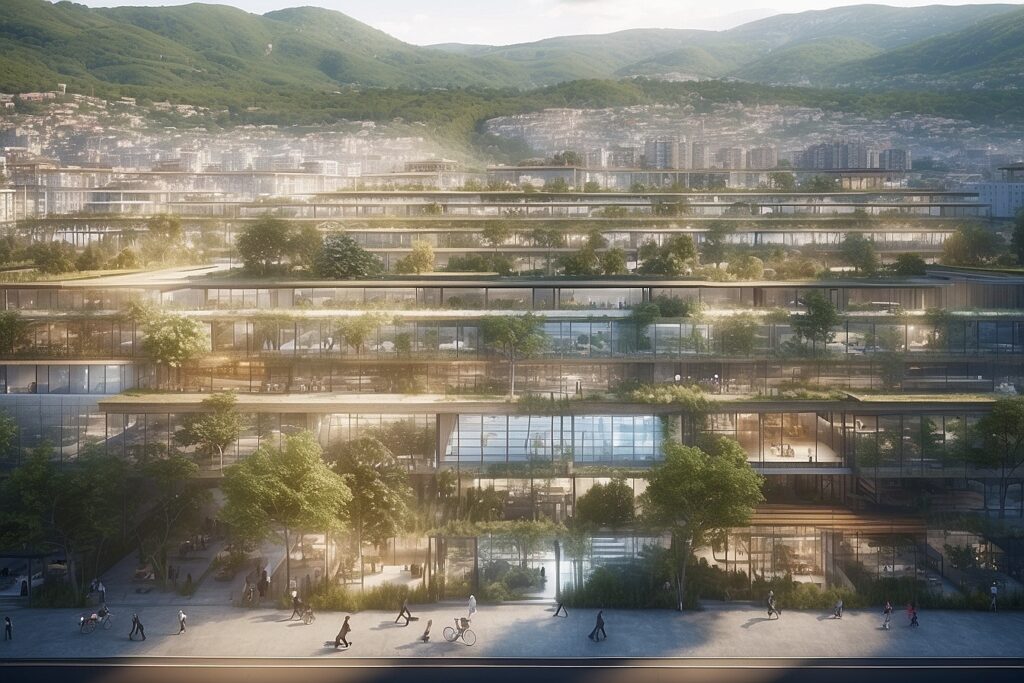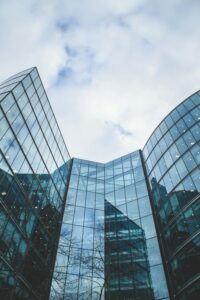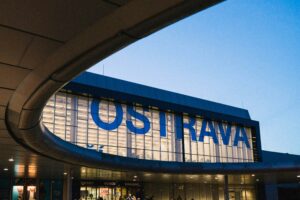The ongoing global shift towards urban living, with over half of the world’s population now residing in cities, underscores the pressing need for sustainable urban mixed-use developments. This trend is expected to continue as urbanization accelerates and the impacts of climate change become more pronounced.

Amidst these challenges, urban developments have the potential to play a pivotal role in mitigating climate risks and embracing the opportunities presented by a rapidly expanding and diverse global population, which has surged from 2.5 billion in 1950 to 8 billion today.
Furthermore, the phenomenon of urban migration, with over 3 million individuals relocating to cities worldwide every week, has led to the emergence of mega-cities.
These urban centers not only experience population growth but also witness increasing diversity and cultural heterogeneity. This diversity poses significant challenges, as cities must navigate the integration of newcomers into society while ensuring sustainable social cohesion and inclusive urban environments.
Addressing these challenges necessitates a concerted effort towards sustainability within communities and cities, a task that extends to major urban centers worldwide, including various European regions, cities, and towns. Illustrating the magnitude of this challenge, the ‘Structuurvisie Randstad 2040’ underscores the need to develop areas equivalent to 10 to 20 times the size of Amersfoort (63.84 km2) to accommodate the burgeoning population.
Sustainable urban development has emerged as a top priority on political agendas, primarily due to its multifaceted nature and the array of challenges it presents to policymakers. From climate change and energy management to waste reduction, biodiversity preservation, and addressing the needs of an aging population, sustainable urban development encompasses a broad spectrum of concerns.
Additionally, it involves integrating cutting-edge technology, enhancing public safety, and meeting the evolving demands of diverse communities.
Moreover, the economic and social significance of urban areas further underscores the importance of sustainable development. By focusing on factors such as functionality, public spaces, and the quality of infrastructure, cities can generate overall benefits for their surroundings.
However, emphasizing solely “green buildings” falls short in ensuring the long-term sustainability of the built environment. A comprehensive approach is essential to address the complex interplay of environmental, economic, and social factors inherent in urban development.
As cities continue to expand at an unprecedented rate, sustainable urban development emerges as a pivotal issue for the 21st century, as acknowledged by the United Nations in 2002.
Projections suggest that by 2030, 60 percent of the global population will reside in urban areas, underscoring the increasing significance of cities and their inhabitants in fostering a transition to a more sustainable world.
Despite cities occupying just 3 percent of the Earth’s landmass, they consume a staggering 75 percent of global energy and are accountable for 80 percent of global greenhouse gas emissions. However, cities also hold immense potential to champion sustainability initiatives and significantly impact global sustainability efforts by embracing truly sustainable urban development practices.
In the realm of sustainable urban development, the impact on the value of buildings is profound, both directly and indirectly. Unlike the narrow focus on physical infrastructure at the building scale, sustainable urban development encompasses a broader spectrum, including the surrounding facilities, services, long-term planning perspectives, functional diversity, aesthetic appeal, social cohesion, and more.
Adopting a holistic approach that integrates various elements within the urban fabric yields numerous benefits. From enhanced environmental sustainability and resource efficiency to improved quality of life and social well-being, the comprehensive nature of sustainable urban development offers multifaceted advantages for communities and cities alike.
As our world undergoes rapid urbanization, the design and planning of mixed-use developments in urban areas have become paramount in addressing a myriad of challenges.
One such challenge lies in creating sustainable and people-centric urban spaces that cater to the diverse needs of their inhabitants. Mixed-use development, characterized by its integration of various functions such as residential, commercial, office, entertainment, and public amenities within a single urban complex, emerges as a solution to this challenge.
The concept of mixed-use developments offers a host of advantages for communities, developers, governments, businesses, and other stakeholders involved. By consolidating multiple functions in one location, these developments optimize land use, thereby maximizing space efficiency.

Moreover, the diverse array of amenities within close proximity fosters increased foot traffic, as residents, workers, shoppers, and visitors converge within the same vicinity. This not only enhances the vibrancy and liveliness of the urban environment but also promotes economic activity by supporting local businesses and facilitating social interactions.
Mixed-use development projects encompass a spectrum of possibilities, each serving distinct purposes and objectives:
- Regeneration of Derelict Inner-City Sites:
These initiatives involve revitalizing abandoned or neglected urban areas, breathing new life into previously blighted neighborhoods. By repurposing vacant lots or obsolete buildings, developers can create vibrant mixed-use communities that contribute to the economic, social, and cultural revival of inner-city locales. - Greenfield Urban Extension Developments:
In contrast to inner-city regeneration, greenfield developments entail the expansion of urban areas into undeveloped or rural land. These projects offer an opportunity to accommodate population growth and urbanization trends while preserving green spaces and natural environments. By integrating mixed-use elements into new urban extensions, planners can create sustainable, well-connected neighborhoods with access to diverse amenities. - Improvement and Extension of Present Single-Structured Developments:
This category involves enhancing existing developments by incorporating additional mixed-use components or upgrading infrastructure to meet evolving needs. By expanding upon established urban complexes, developers can optimize space utilization and enhance the overall functionality and appeal of these areas. - Preservation and Upgrade of Existing Mixed-Use Developments:
In cases where mixed-use developments already exist, efforts may focus on preserving their heritage value while modernizing facilities and amenities to align with contemporary standards and preferences. Renovation and adaptive reuse strategies can breathe new life into aging mixed-use complexes, ensuring their continued relevance and sustainability.
By enhancing the flexibility and accessibility of mixed-use urban neighborhoods, stakeholders can promote self-sufficiency and sustainability. Measures such as reducing reliance on motor vehicles, promoting active transportation modes like walking and cycling, and fostering a pedestrian-friendly environment contribute to cleaner air quality, improved well-being, and reduced demand for extensive road infrastructure.
This holistic approach ensures that essential amenities and services are easily accessible within walking or cycling distance, fostering a sense of community and promoting a more sustainable urban lifestyle.
Sustainable mixed-use urban developments offer a plethora of benefits, catering to diverse consumer trends, housing needs, and retail preferences. They provide retailers with a ready-made local customer base, offering a competitive edge in the face of e-commerce growth. Moreover, the economic growth generated by the diverse range of offerings and services makes these developments attractive for investment, fostering vibrant and thriving communities.
However, like any investment endeavor, mixed-use urban developments entail inherent risks, particularly given their complexity and multifaceted nature. Challenges arise from navigating planning, zoning, and regulatory requirements, as well as ensuring alignment with stakeholder objectives, which can complicate decision-making processes.
Market trends and sector uncertainties, such as fluctuations in residential demand, further contribute to the risk landscape. Additionally, addressing social cohesion and incorporating environmental, social, and governance (ESG) considerations to ensure resilience against climate change impacts adds layers of complexity to development efforts.
Securing financing for mixed-use projects presents another significant challenge, with upfront costs, long financing periods, and the need for substantial equity investment posing hurdles for developers. Institutional investors, accustomed to single-asset class investments, may exhibit reluctance to diversify into multi-asset class ventures, necessitating persuasive arguments to attract funding. Moreover, land acquisition for large-scale developments in inner-city areas requires substantial financial resources or complex ownership structures, further complicating the financing landscape.
In response to these challenges, municipalities have transitioned from active participants to facilitators, paving the way for private-led developments to flourish. Private-led initiatives offer a promising strategy for realizing sustainable mixed-use urban areas, leveraging private sector expertise and resources to drive development projects forward.
Despite the complexities and challenges inherent in mixed-use urban developments, they offer a comprehensive approach to urban planning, addressing environmental, social, and economic imperatives. By providing a blueprint for creating livable, resilient, and inclusive cities, sustainable mixed-use developments pave the way for a brighter future for present and future generations alike.




I don’t think the title of your article matches the content lol. Just kidding, mainly because I had some doubts after reading the article.
Thank you for your sharing. I am worried that I lack creative ideas. It is your article that makes me full of hope. Thank you. But, I have a question, can you help me?